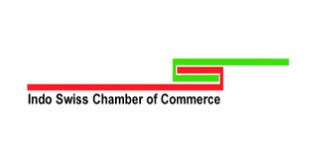SLX has launched Live Master Classes with deeper insights into sustainability, by industry experts. Enroll for the 45-minute session for free!

The certification course offers input from various experts from the industry. The course is validated globally with an industry-validated skills framework.

Do you want your job to be value-oriented? Or would you like your present job to shift focus towards meaning and value? Take this certification course and build what you are looking for!

The certification course will diversify your skillset. This will help you find better work opportunities in better companies!
The sessions will be delivered by world class faculty members with vast experience in the field of education and sustainability.
Our Certifications will help you integrate sustainable development processes and practices with ease into your deliverables & activities.
Our certification courses have comprehensive reference material on Sustainability, ESG, and many related topics.




At the crux of gender inequality lies the assumption that one gender is better than the others. Due to the high incidence of patriarchal societies in most parts of the globe, it is usually the females who are discriminated against. On its own, gender inequality is not a new phenomenon; but it is only since the 20th century that conscious conversation on overcoming this situation has begun.
Also known as gender discrimination, gender inequality is based on distinction and misconceptions based on biological factors. Due to this women, because of their basic anatomy, are discriminated against. For example, they fail to gain access to even some of the very basic things like the right to equal treatment, the right to education, and the right to other growth opportunities. All these limitations spiral into building an unfair society, where one’s destiny is predominantly decided by the physical body they are born into.
Gender inequality also handicaps the chances of taking major decisions around personal growth, financial independence. This thereby affects the overall growth of a community and thereby a particular society as well.
The pre-defined gender roles have a huge role in building gender gap and thereby leading to gender discrimination. Women, because of their biological makeup, are usually caught up in the bearing and rearing the children. This activity graduates into taking care of household affairs and having minimal say in the economical aspect of the household. Similarly, most of the agrarian societies have gender roles defined in such a manner that it favors the males – because they are the ones working in the fields and are biologically better equipped in doing strenuous jobs.
The arrival of industrialization played a vital role in shifting the structure of society. As machines and industries did most of the work, women did find an inlet into the working population. With each phase of the industrial revolution, the connection between the gender and the tasks to be done has been squashed.
While industrialization brought a change in the paradigm of traditional gender roles, did it actually help women overcome gender inequality?
Achieving gender equality is the fifth of the 17 sustainable development goals (SDGs). This SDG5 revolves around:
Now that we are clear on what gender inequality is, and what the United Nations envisions on building a gender-equal society, let us explore what is the condition of women in the workforce.
Since 1991, managerial positions are being filled at a constant pace. At present close to 50% of working-age women are part of the labor force. The number differs from region to region and is especially in favor of high-income countries.
According to ILO, women are surpassing men in third-level education – with only Africa having women earning fewer third-level qualifications than men, that too by a small margin.

Do these figures mean that women, at last, are faring well? That the concept of glass ceiling no longer exists? Are we closer to achieving the goal of gender equality?
Unfortunately, these numbers do not portray the entire reality. No doubt, the position of women in the workforce has improved at an exponential rate; with even, the mid and low-income countries witnessing a drastic change in their workforce demographics. While North America has 36% of women in management positions, the APAC and African nations have 20% and 19% of women in these roles. Nowhere do women hold 50% of the decision-making roles – and this gender gap is what needs to be intelligently filled by making more entry-level for the females.
At present, the glass ceiling effect has resulted in occupational segregation, wherein female managers are concentrated in non-decision-making roles. Business support functions like Human Resources, Finance, and Admin departments are some of the best examples of such roles. This occupational segregation places females at a lower pedestal, a position that limits their contribution towards any meaningful change in the demographic at the top of the corporate ladder.
Here is what happens when the CEO is a woman:

While the best way to fix gender inequality is to revamp the existing systems by encouraging changes in mindset, it is also predicted that 4IR – fourth industrial revolution can help build a more gender-equal world. Equipping women with all the digital skills is imperative to achieve this goal. It is at this juncture that policy-makers, government, pressure groups, and self-help groups should pitch in to construct systems that encourage women in digital skill development.
At present even though the glass ceiling has not been shattered, there has been a deep dent for sure. Only when we initiate meaningful conversation and develop frameworks for smooth entry and growth of women in the workforce, can the glass ceiling disappear.